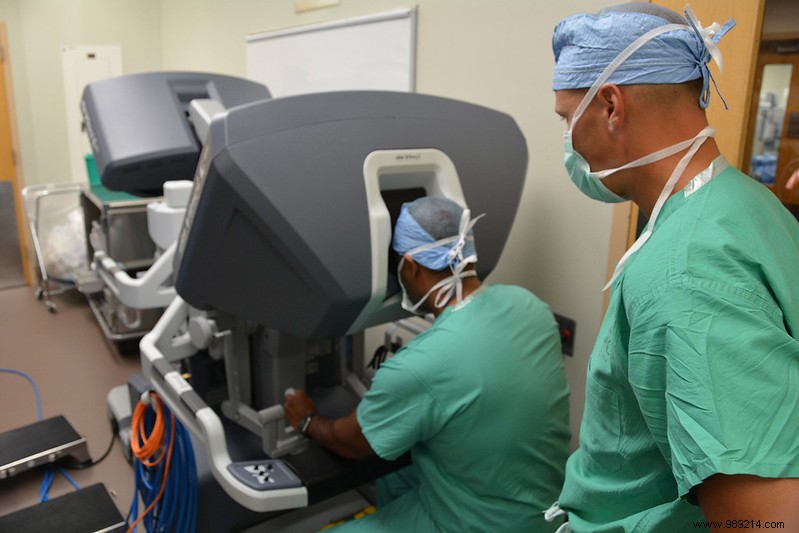Consolidating the chances of success of an operation involving a robot-surgeon, such is the objective of a team of American researchers. They have developed a device generating electrical impulses in the fingers of a doctor remotely controlling such a robot.
Surgeons may have shaky hands during an operation. The problem is also found when the doctor uses a robot-surgeon remotely. In a study published in the journal Scientific Reports in January 2020, researchers from Texas A&M University (USA) described their innovation to improve movement stability when using such a machine.
Recall that the doctor first sits on a kind of cockpit with a screen. Then he can start to manipulate the robot's arms and fingers using joysticks. In addition, you should know that the professional is guided by the screen of the station, a video feedback allowed by the presence of a camera on the robot.
However, the fact is that the camera creates difficulties in apprehending the distance between the robotic fingers and the area to be operated on. Thus, the researchers had the idea of developing a system of electrical signals sent directly into the fingers of the surgeon by means of gloves whose fingertips are equipped with probes. The intensity of the current arriving in the fingers of the doctor is minimal. However, there is a certain sensitivity involved. Thus, the variable frequency of the pulses allows the surgeon to know the distances more precisely.

Obviously, the use of such a device must first be trained. The main difficulty lies in the fact of associating the different pulse frequencies with just as much distance between the fingers of the robot and the area to be operated on (or the objects to manipulate). This allows you to adapt your movements and, ultimately, to be more precise. The purpose of the device is to make surgeons reduce the speed of their approach, precisely to gain precision.
You should know that the researchers are also working on a way to personalize the signal . Indeed, these took into account the fact that not all doctors had the same "sense of rhythm". Training is therefore essential to adjust and thus avoid errors once in a real situation.
Here is a description of the concept from researchers at Texas A&M University: